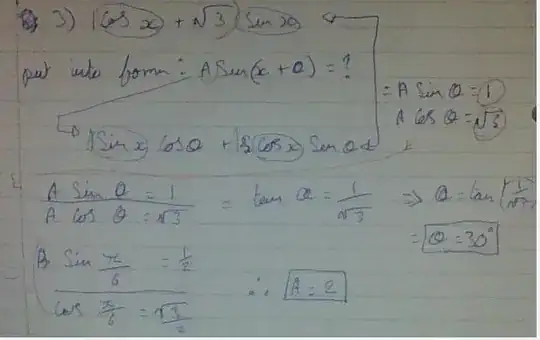The task is to manipulate $$\cos(x) + \sqrt{3}\sin(x)$$
into the form $$A\sin(x+ \theta)$$
My question is : why is $\pi$ in the numerator and denominator both divided by $6$?
I am familiar with most of the question, however I get stuck in a certain area. The following image shows the question as a whole:-

I am unsure why $\pi$ in the numerator and denominator are both divided by $6$?
Please can someone explain how this is so ?
Many thanks.